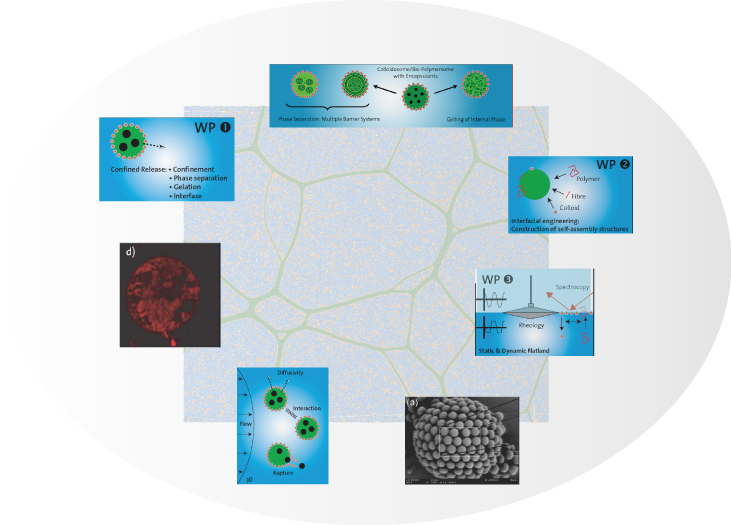
New controlled release systems produced by self-assembly of biopolymers and colloidal particles at fluid-fluid interfaces
| Microrheology involves simultaneous determination of microstructure and deformation properties, which is essential for understanding structure-deformation relationships. The unit used combines a confocal laser scanning microscope with a compression unit. The main advantage of this approach is that the changes in the microstructure during deformation can be visualised and quantified in three dimensions. It was used to measure microstructural changes and breakdown mechanisms in whey protein isolate/polysaccharide gels. Microstructural changes in protein continuous and bicontinuous gels were quantified. The changes relate to the amount of serum released from the gels during compression. Additionally, the gels showed similar breakdown mechanisms, i.e. they fractured through the protein beams into the serum phase. (c) 2007 Elsevier Ltd. All rights reserved. [hide]
Scientific Board
Scientific Stuff
Associated Scientists |

|
Enjoy your reading
SY Tee, AR Bausch, PA Janmey, | |
Selected conferences (co-)organized by project members8th World Congress on Computational Mechanics WCCM8 200830 June - 5 July 2007, Venice, Italy ► |
13 May 2025
![]() mk
mk